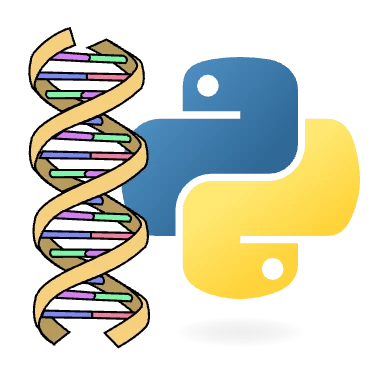Applied Python Programming for Life Scientists: From Fundamentals to Algorithmic Thinking and Data-Driven Discovery
Introduction

Welcome to Applied Python Programming for Life Scientists: From Fundamentals to Algorithmic Thinking and Data-Driven Discovery! This book is designed for biology and life science students with little to no prior coding experience. Rather than aiming to make you Python experts, the goal is to help you develop fundamental programming concepts and data analysis skills using Python as a practical tool.
The content progresses from basic syntax through algorithms, functions, classes, error handling, data science applications, and testing methodologies. Each concept is presented with life science examples to show how programming principles can enhance your research capabilities.
This resource serves as an introduction to computational and algorithmic thinking in biological contexts, providing a solid foundation to approach scientific questions from a programming perspective and to effectively incorporate data analysis using Python into your research workflow.
Book Structure
The material in this online textbook has been lightly adapted from material used to teach a one semester introduction Python programming to life scientists.
The material includes:
- Introduction
- Setup instructions (coming soon)
- Nine numbered chapters (“Basics” through “I/O, Files, & Contexts”) that make up the bulk of the learning material
- Three assignments (coming soon)
- Three miniprojects
- Various appendices with
- Practice problems
- Solutions to practice problems
- “Stop & Think” Solutions
- Short coverage of useful topics like regular expressions
How to Approach the Material
For each chapter, you should download the Quarto notebook, and code along. That is, whenever you see code samples, play around with them, try to extend them or break them in various ways, observe the error messages you get, etc. Quarto docs provide a nice playground for exploring the code, so be sure to use them.
Some chapters have additional practice problems or “Stop & Think” sections. You should always attempt to answer the “Stop & Think” questions before continuing on with the chapter. For chapters with practice problems, I suggest you do at least some of them until you feel comfortable. Make sure you come back to previous chapter’s practice problems from time to time while you’re learning for review.
Assignments and Miniprojects are there to test your learning. In general, they will have lots of helpful tips and tricks to get you started. If you’re more advanced, you may think there is too much hand-holding in these documents. Remember that this material is geared towards life scientists with no prior programming experience. If that doesn’t describe you, give the assignments and miniprojects a try without looking at the hints.
Suggested Progression
This is roughly the progression we followed in the course:
- Chapter 1 Basics
- Assignment 1: Getting Started with Python
- Chapter 2 Collections
- Miniproject 1: Modeling Amoeba Population Growth
- Chapter 3 Algorithmic Thinking
- Chapter 4 Functions
- Assignment 2: Functions & Problem Solving
- Chapter 5 Introduction to Object-Oriented Programming
- Chapter 6 Errors & Exceptions
- Miniproject 2: Gene Expression Analysis
- Chapter 7 Intro to Exploratory Data Analysis with Python
- Chapter 8 Intro to Statistics & Modeling with Python
- Assignment 3: Using Python for Data Science
- Chapter 9 I/O, Files, & Contexts
- Miniproject 3: Read Quality Control
Notes
- Not all chapters have additional practice problems or “Stop & Think” sections
- While the assignments are written, they haven’t yet been uploaded to the site
License
Applied Python Programming for Life Scientists: From Fundamentals to Algorithmic Thinking and Data-Driven Discovery by Ryan M. Moore is licensed under CC BY 4.0
